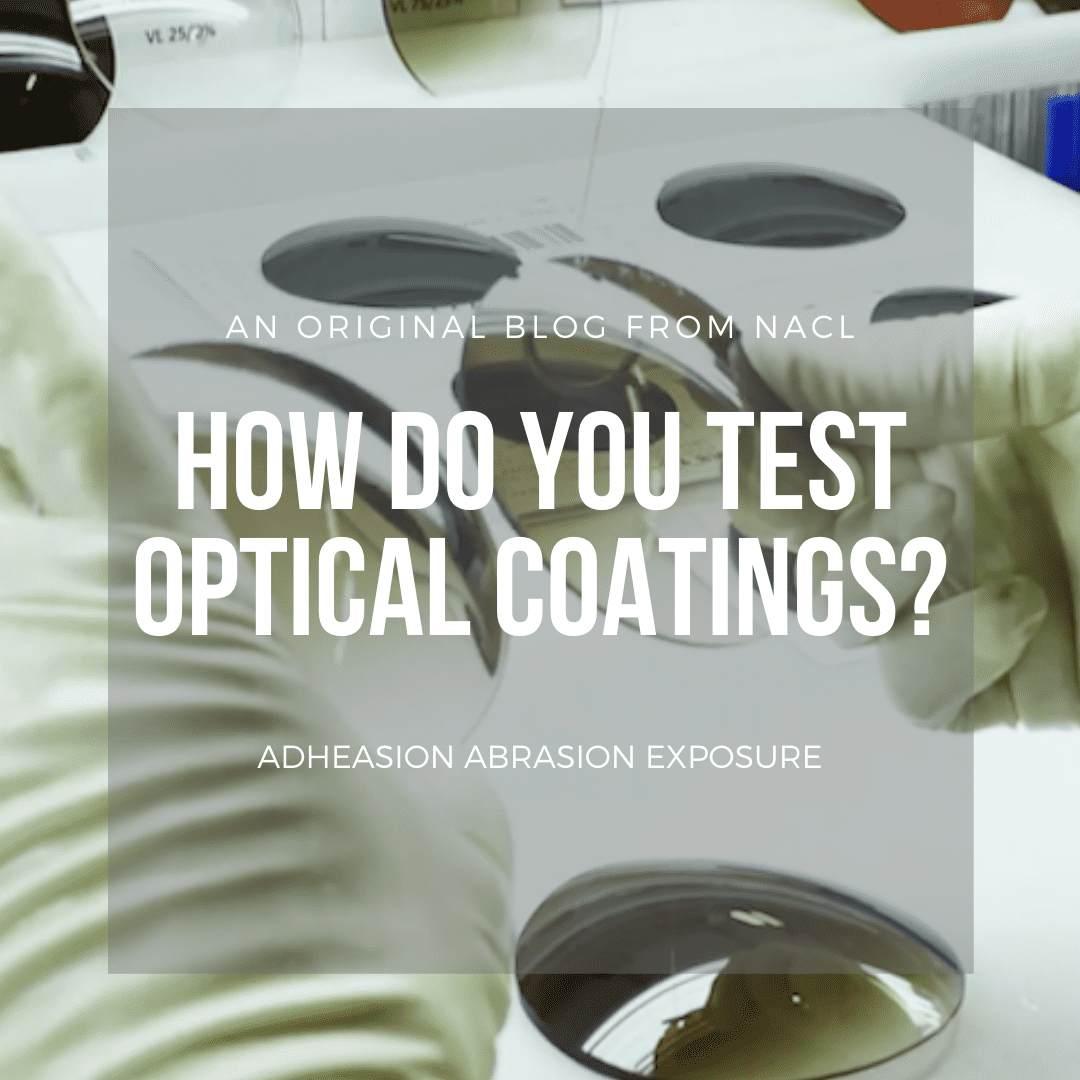How do you test an optical Coating?
A regular question we get here at NACL is “how do you test an optical coating”? The answer will always have some variables depending on the coating type, substrate material, application, and complexity of the test requirements (both mechanical and optical). This quick post should help outline the methods the coating industry uses and help you make an educated decision in which tests are most beneficial for your program.
Abrasion Resistance Testing
Abrasion resistance testing is specified when coatings will be exposed to the environment and regular cleaning/handling on the completed optical component. Two tests that are commonly specified are under detailed in MIL-C-48497; Moderate Abrasion and Severe Abrasion. The moderate abrasion test is specified for applications where a coating will withstand cleaning and handling in a controlled or “best practices” scenario (for more on cleaning optics click here). The severe abrasion test is specified when coatings will be in harsh conditions with less control over the cleaning and handling methodologies. The two specific MIL-C-48497 tests are conducted as follows:
Moderate Abrasion – The coating is subjected to 50 strokes across the surface with a 1/4″ thick pad of clean, dry cheesecloth. A minimum bearing force of 1 pound is applied to the pad during the test. A coating that achieves a “passing” mark for this test will show no signs of deterioration such as streaks or scratches after testing.
Severe Abrasion – The coating is subjected to 20 strokes across the surface with a standard eraser conforming to MIL-E-12397 (rubber pumice). A bearing force of 2 to 2.5 pounds is applied to the eraser during the test. A coating that achieves a “passing” mark for this test will show no signs of deterioration after testing.
Adhesion Testing
Adhesion testing is performed to qualify the effectiveness of the processes performed and to assure the end-used that proper adherence of the film to the optical substrate has been achieved. Testing is appropriate for coatings which will be exposed to handling and cleaning on a finished optical assembly. Again, a commonly utilized adhesion test is that of MIL-C-48497. This test is performed as follows: A piece of 1/2″ wide cellophane tape conforming to FED Spec. L-T-90, Type 1 is pressed firmly onto the coated surface of the component. The tape is quickly removed at an angle normal to the coated surface. An acceptable component will exhibit no signs of coating removal in the tested area. Removed film will have a higher reflectance or multi-color sheen to it than the clear cellulose tape surface. Other more aggressive tapes and destructive testing may be performed depending on the severity of use an optic may experience in its usable life-cycle.
Environmental Exposure Testing
Environmental testing provides data from which a determination can be made that a product meets a specified benchmark. With this empirical data a manufacturer could estimate the lifecycle of their optical products. The procedures outlined in military specifications including MIL-C-675, MIL-M-13508, MIL-C48497, and MIL-F-48616 help you when confirming that a product is currently meeting a specified minimum requirement. The procedures outlined in MIL-STD-810E specifically allow manufacturers to qualify products for storage and use in defined geographical/climatic areas of the world. Eight discrete climatic regions are defined in this standard. The tests defined in in MIL-STD-810E simulate the most extreme conditions of temperature and humidity as well as the daytime cycles which a product would endure while used in a particular region. The manufacturer can select appropriate testing parameters to qualify a product based on where it may be used geographically. There is a set of intensified test protocols within MIL-STD-810E for temperature & humidity exposure which lets manufacturers of optical devices perform accelerated lifetime testing. These protocols are vital to comparison testing. All simulated lifecycle tests are useful tools but can only be considered as theoretical and not definitive as to the actual real world lifecycle an optical system may achieve.
Temperature Exposure Testing
Temperature exposure testing helps a manufacturer understand how robust a coating or an assembly will be to changes in the temperature an optical system will see during use. Common testing guidelines for temperature exposure are MIL-C-48497, and MIL-STD-810E. We’d love to chat more about your program and see if our coating solutions are a fit for your application. Connect with us and we can help you with your decision as to which process is most beneficial for your program.






